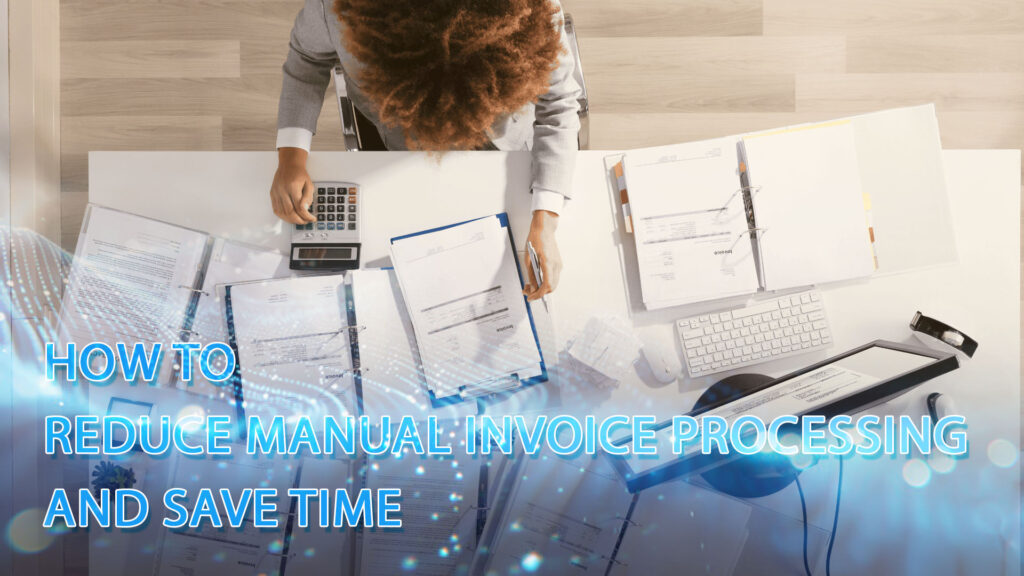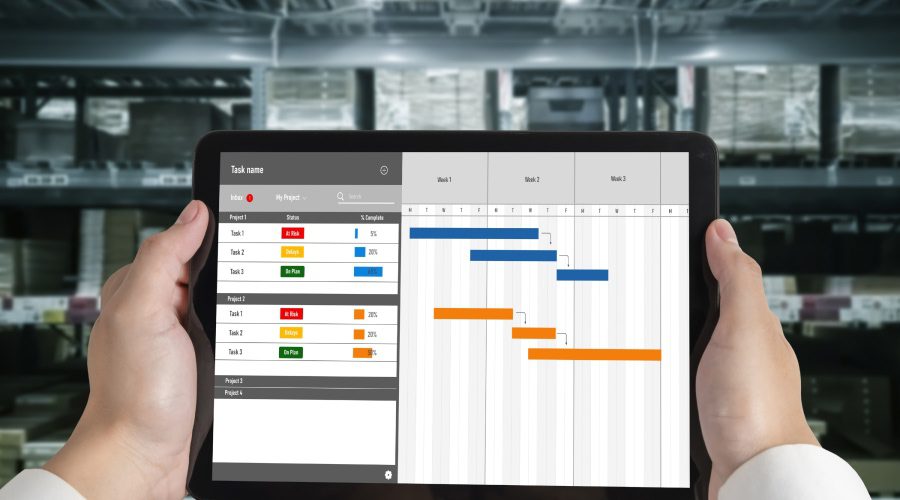For businesses, manual invoice processing is time-consuming, error-prone, and a headache. With the advancement of technology, there are now many effective ways to reduce manual invoice processing, thereby saving a significant amount of time and resources. In this article, DIGI-TEXX will delve into why reducing manual work in invoice processing is important and provide a detailed roadmap on how to do it through the application of automation solutions and system integration.

Why Reducing Manual Work Matters

Reducing manual invoice processing is not only a goal to strive for, but also an urgent requirement for modern businesses. Here are the main pain points that businesses often face:
- High error rates: Manual data entry is prone to errors, from typos to incorrect numbers, causing data inconsistencies and financial problems. You can explore Top Data Entry Software to reduce errors and improve accuracy.
- High operating costs: Each manual invoice can sometimes take hours of staff time, including data entry, reconciliation, approval, and storage, which significantly consumes the time of the staff involved.
- Delayed payments: Manual processes take longer to process, leading to late payments, which can damage supplier relationships.
- Low visibility and management: Invoice status is difficult to track, leading to a lack of transparency and difficulty in forecasting cash flow and managing large numbers of invoices.
- Fraud and non-compliance risks: Manual processes are difficult to control, creating loopholes for fraudulent activities and potentially leading to non-compliance with the company’s payment regulations.
How To Reduce manual invoice processing?
To effectively reduce manual invoice processing, businesses need to adopt a comprehensive strategy. Here are the key steps to achieve this goal:
Reduce Invoice Errors

Minimizing invoice errors is the first and most important step to reduce manual invoice processing. To overcome this, businesses should:
- Standardize invoice formats: Store invoices in a standard format, such as structured XML or PDF files for easy data extraction.
- Automated cross-checking: Use software tools to automatically check the validity of data (e.g., date format, total amount, supplier code) as soon as invoices are entered into the system. You can check out our article on the Top Invoice Processing Software to find the best solution for your business.
- Set up validation rules: Build specific business rules to automatically flag invoices that do not match the purchase order (PO) or goods receipt for post-audit purposes.
- Reduce manual data entry: The less data is entered manually, the less errors occur. Therefore, integrate automation solutions to capture data directly from invoices and reduce manual entry to a minimum.
Boost Invoice Accuracy with IDP
The key to reducing manual invoice processing in the modern context is easier with Intelligent Document Processing (IDP) technology. IDP is not only optical character recognition (OCR) but also combines Artificial Intelligence (AI) and Machine Learning to understand, extract and classify data from structured and unstructured documents.
- Intelligent data extraction: IDP can automatically recognize and extract important information fields on invoices (such as invoice number, date, amount, supplier name, item details).
- Continuous Learning: Standardized IDP systems continuously learn from user interactions and processed invoices, improving accuracy over time and being able to analyze the vast majority of invoices in the market.
- Minimize Human Error: By automating data extraction, IDPs completely eliminate manual data entry, ensuring that invoice data is always accurate before entering the system.
Automate Approval Workflows

Instead of invoices going through multiple desks or manual emails, automated systems route invoices to the right approvers based on pre-established rules.
- Rules-Based Routing: Set up rules so that invoices are automatically sent to the appropriate manager or invoice processor based on amount, vendor, or expense type.
- Automatic Notifications: The system automatically sends notifications to approvers when there are pending invoices, with periodic reminders to avoid delays in the payment process.
- Remote Approval: Allows approvers to review and approve invoices from anywhere, anytime via phones and mobile devices with an Internet connection.
Enable Supplier Self-Service
In addition, creating a self-service environment for suppliers is a smart strategy to reduce manual invoice processing. Instead of suppliers having to contact you by phone or email to inquire about payment status, they can look up information themselves.
- Supplier Portal: Set up a secure online portal where suppliers can submit electronic invoices, check their invoice status, and view payment history.
- Reduce Inquiries: When suppliers can access information themselves, the number of calls and emails asking about invoice status will decrease significantly, freeing up time for the accounting team.
Automate the Entire AP Process

To truly reduce manual invoice processing, businesses should aim to automate the entire Accounts Payable (AP) process. This process includes the steps from when an invoice is received, through validation and approval, to payment and accounting.
- End-to-end: A comprehensive automation solution handles every step: invoice collection, data extraction (using IDP), reconciliation with POs and receipts, approval routing, and integration with payment systems.
- Eliminate bottlenecks: Automation eliminates manual bottlenecks, ensuring a seamless and efficient workflow.
- Minimize manual intervention: Most repetitive tasks will be performed by machines, freeing up employees to focus on other tasks.
Integrate with ERP or Accounting Software
Integrating your automated invoice processing system with your existing ERP or accounting software is a key step to reduce manual invoice processing and ensure a smooth data flow.
- Data synchronization: Automatically transferring validated and approved invoice data into your ERP or accounting software will reduce manual data entry.
- Real-time updates: Will help ensure that financial reports are always up to date with the latest invoice information from the departments that are using the expenses.
- Improved reporting: Consistent data across systems will help create more accurate and in-depth financial reports, supporting easier business decision-making.
- Process consolidation: Seamlessly connect processes from procurement to payment, creating a unified and efficient AP cycle.
Track Invoice KPIs to Optimize Performance

Finally, to continuously reduce manual invoice processing and optimize performance, businesses need to set metrics to measure whether the activities have been effective.
- Invoice processing time: Measures the average time from receipt of an invoice to payment. The ultimate goal when implementing manual invoice processing is to reduce this number.
- Invoice processing cost: Calculates the average cost to process an invoice, including labor, technology, and related costs.
- Invoice error rate: Tracks the number of invoices with errors that need to be fixed after implementing the new process.
- On-time payment rate: Ensures that the majority of invoices are paid on time or take advantage of early payment discounts.
- Automation rate: Measures the percentage of invoices that are processed without manual intervention.
Conclusion
In short, reducing manual invoice processing is a strategic goal that every business should aim for to optimize financial operations, save costs and improve efficiency. When implementing, monitoring the relevant KPIs will help maintain the momentum of improvement and ensure optimal performance, and businesses will know that they are not wasting resources in vain.
At DIGI-TEXX, we provide leading invoice processing automation solutions, helping your business realize the goal of reducing manual invoice processing and maximizing the benefits of technology. Contact us today to find out how we can support your business to optimize the work of your finance and accounting department.
=> Explore now:


